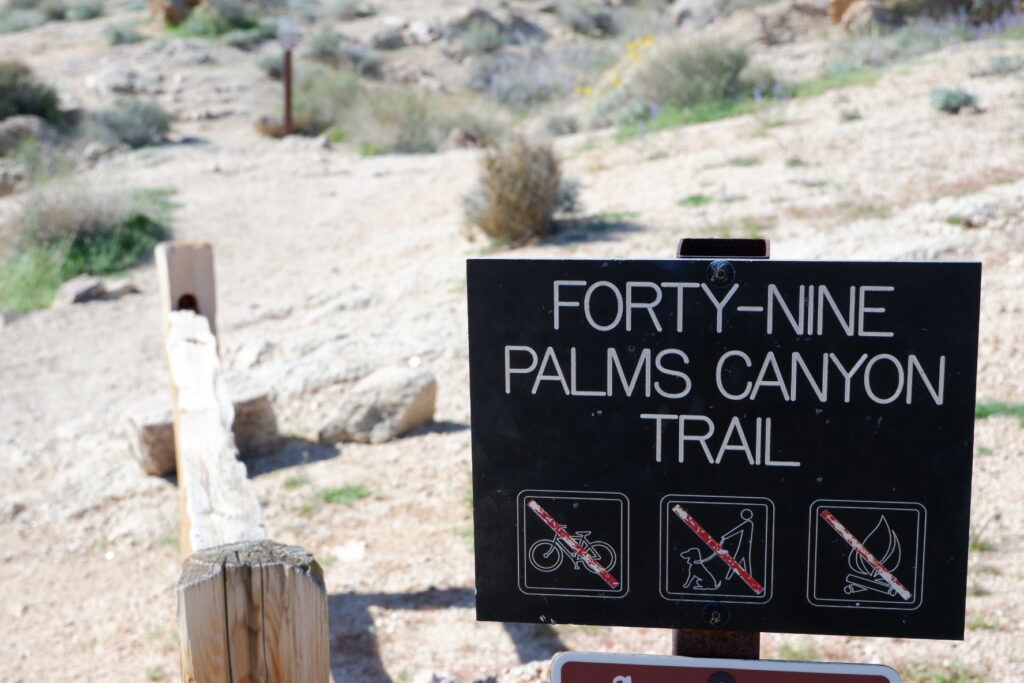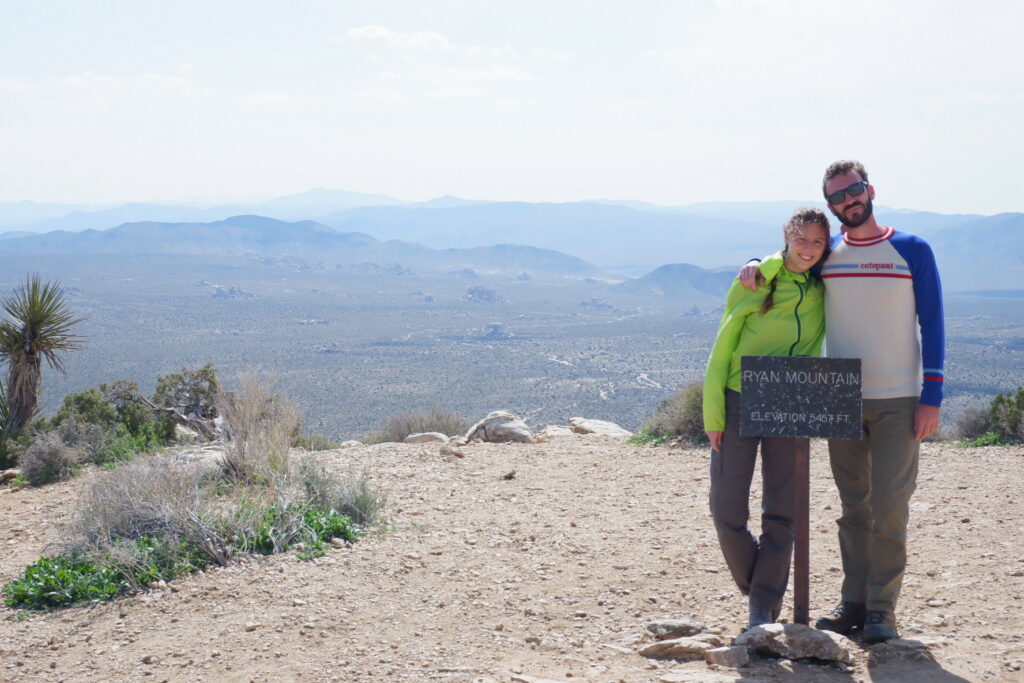Boulders and buttresses, rugged mountains, gold mining ruins, desert plains dotted with the oddball trees—this is one weird place. Joshua Tree National Park lies at an ecological crossroads, where the high Mojave Desert meets the low Colorado Desert.
The Colorado, the western reach of the vast Sonoran Desert, thrives below 3000 feet on the park’s gently declining eastern flank, where temperatures are usually higher. Considered “low desert” compared to the loftier, wetter and more vegetated Mojave “high desert”, the Colorado seems sparse and forbidding. It begins at the park’s midsection, sweeping east across empy basins stubbled with creosote bushes. Occasionally decorated by “gardens” of flowering ocotillo and cholla cactus, it runs across arid Pinto Basin into a parched wilderness of broken rock in the Eagle and Coxcomb Mountains.
Above 3,000 feet, the Mojave section claims the park’s western half, where giant branching yuccas thrive on sandy plains studded by massive granite monoliths and rock piles. These are among the most intriguing and photogenic geological phenomena found in California’s many desert regions.
The result of this encounter of two different ecosystems is amazing desert flora, including those wacky namesake trees (actually a type of yucca). The Joshua Tree was revered by American Indian tribes because its leaves provided durable materials for baskets and footwear, while the buds and seeds made a healthy addition to their food supply.Joshua Tree’s beauty shines around the clock, with vibrant sunsets melting into nights filled with uncountable stars.
Crafted over millions of years by torrential rain, battering wind, and extreme temperatures, Joshua Tree National Park stretches over nearly 800,000 acres of rugged terrain. These landscapes, which can seem deceptively barren, are home to several ecosystems. Despite the harsh conditions, Joshua Tree teems with plant and animal life that has adapted and thrived in the area’s fierce climate. Joshua Tree National Park is home to large herds of desert bighorn sheep, black tailed jack rabbits, coyotes and kangaroo rats as well as a number of smaller mammals. Since it lies along the Pacific migratory bird flyway, many large groups of migrating birds can be spotted overhead or stopping to rest in the park during the winter months.



















































